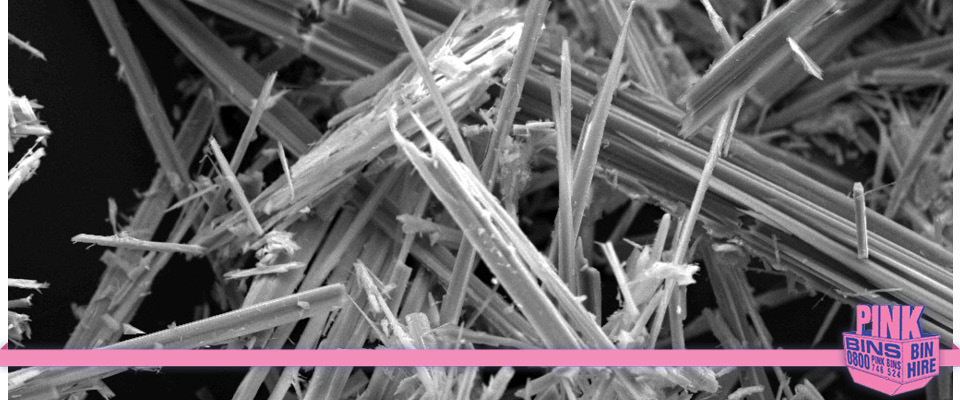Health and safety has been the news lately. And for this we can thank Workplace Relations Minister, Michael Woodhouse. Apparently he reckons – golf and worm farming is highly dangerous. What about mining? What about waste disposal?
Well, our industry of waste disposal isn’t exactly highly dangerous. However, there are some risks. One of those risks is transporting asbestos.
What is asbestos?
Asbestos is a naturally-occurring mineral. Its history dates as far back as the ancient Roman Empire, where it was used to produce fabric for textiles and clothing.
Asbestos can absorb sound; it has high tensile strength and is resistance to fire and chemical damage. It’s also affordable. As a result, asbestos was a widely used building material. Of course, we now know it can cause mesothelioma, otherwise known as asbestos cancer.
We at Pink Bins are not certified asbestos removers. Our job is to transport it to landfill. However, when we are asked to transport it, we, of course, take precautions — the dust is definitely not something we want to inhale.
This is the procedure you should take if you believe you have asbestos on your property.
Call a certified asbestos remover
Not just anyone can remove asbestos. By law, you must be certified. So, the first step is to call a professional. If you call us first, as many people do, we’ll recommend someone for you.
Testing and storage of asbestos
The asbestos on your property will be tested, and then, if it is asbestos, will be wrapped and stored for removal.
We provide a bin, and then the certified asbestos remover will wrap the asbestos to prevent any dust escaping.
Wrapping asbestos:
- asbestos must be wrapped in in 200 micros thick plastic bags or polythene sheets
- it must be double-bagged in case one bag ruptures
- bags should be no larger than 1200 mm x 900 mm
- bags shouldn’t be filled more than half
- any excess air in the bags should be removed before they are sealed to prevent the release of dust
- bags should be tied with a goose-neck closure.
Transportation
Once the asbestos is wrapped, we then get involved. All three landfills in Auckland have designated areas for asbestos. And they are very cautious, so we advise them of an incoming load at least two hours in advance. Also, if the asbestos isn’t wrapped perfectly, they won’t take it.
So, what do you think? Is asbestos removal more dangerous than worm farming? Remember, under no circumstances must you try to remove it yourself. Asbestos removal is a job strictly for certified professionals.
If you found this post useful, please share. We also welcome your comments.

